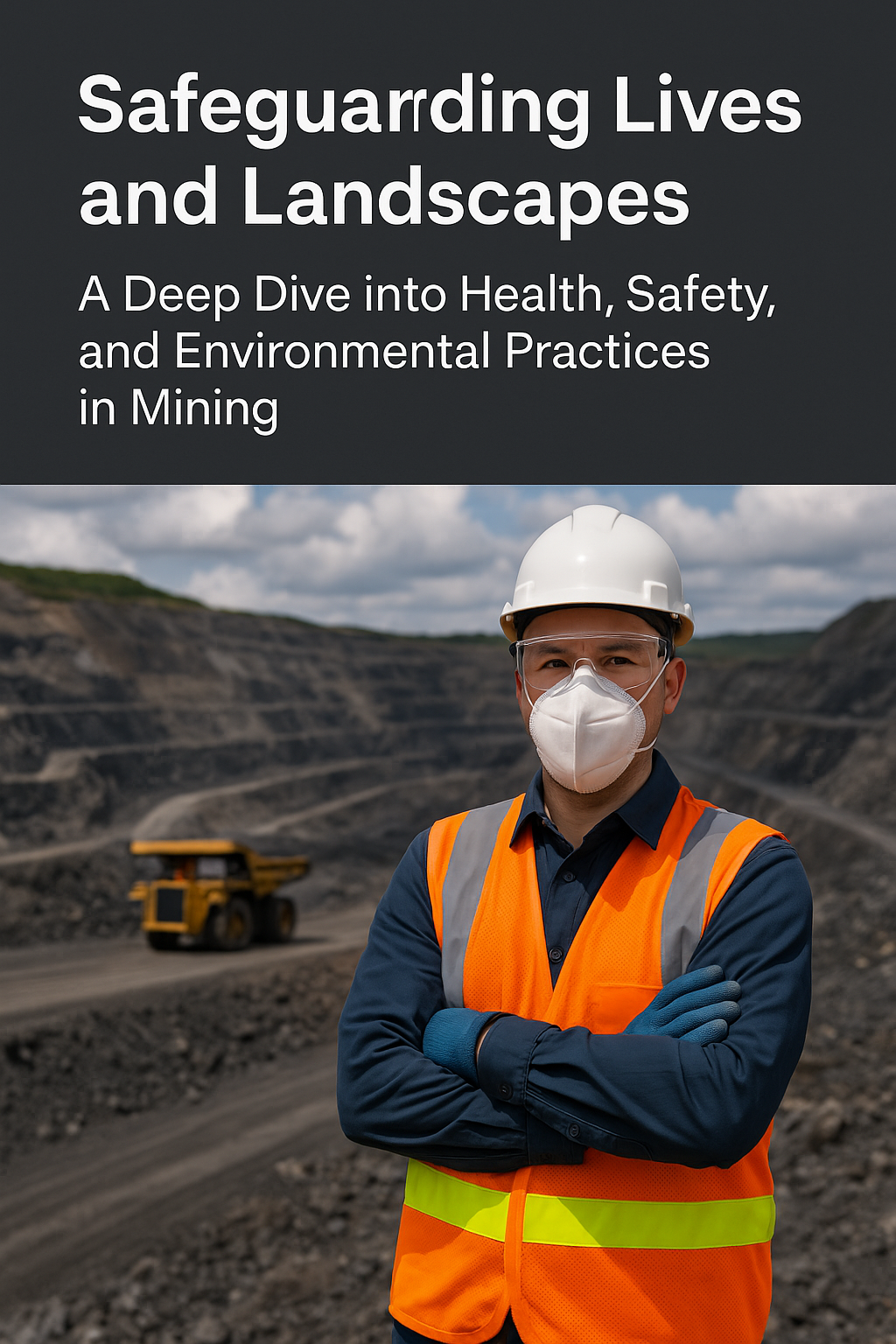DIGGING DEEPER: TRANSFORMATIONAL LEADERSHIP IN THE MINING INDUSTRY
Mining is
one of the world’s oldest and most essential industries — but it's also one of
the most dynamic. From the dusty gold rushes of the past to today’s high-tech,
sustainability-driven operations, the mining sector has undergone a dramatic
transformation. And at the heart of that change is leadership.
Gone are
the days when leadership in mining was purely about technical expertise, rigid
hierarchies, and top-down command structures. In today’s volatile, uncertain,
and rapidly evolving environment, successful mining leaders must balance operational
excellence with human-centered management. They must inspire teams,
navigate global disruptions, adapt to digital innovation, and meet growing
expectations for environmental and social responsibility.
Whether
overseeing underground operations, directing open-pit sites, or leading
multi-national mining corporations, modern mining leaders are expected to wear
many hats — strategist, mentor, innovator, and guardian of safety and
sustainability.
This blog
explores the new era of leadership and management in mining — what it looks
like, why it matters, and how it's shaping the future of the industry. We'll
uncover the traits of transformational leaders, the importance of safety
culture, the integration of digital technologies, and the rising need for
inclusive, forward-thinking leadership that puts people and the planet first.
1. Transformational Leadership in Action
In the
demanding environment of mining, leadership must go far beyond daily oversight.
Transformational leadership has emerged as a powerful approach that not
only boosts productivity but also enhances employee morale, engagement, and
innovation. Unlike transactional leaders who focus strictly on tasks and
performance metrics, transformational leaders ignite passion, instill
purpose, and encourage personal and professional growth among their teams.
What is
Transformational Leadership in Mining?
Transformational
leadership is about creating a shared vision of success and inspiring people to
achieve it together. In the mining sector — where teams often work in remote,
high-risk environments — this leadership style helps build trust, improve communication,
and create a cohesive culture that drives operational excellence.
It’s
especially valuable in today’s mining landscape, which demands agility,
collaboration, and ethical decision-making in the face of environmental and
regulatory pressures. Leaders must be able to inspire their workforce to
embrace change, adopt new technologies, and commit to sustainable practices —
all while maintaining the industry's hallmark focus on safety and efficiency.
Key
Characteristics of Transformational Mining Leaders:
a. Visionary Thinking: They communicate a clear
direction and align their teams with the company’s long-term goals, such
as digital transformation, environmental responsibility, and community
engagement.
b. Emotional Intelligence: Great leaders in mining are
empathetic, approachable, and attuned to the well-being of their people.
They understand that a motivated and mentally healthy team performs
better, especially in high-pressure environments.
c. Empowerment: They delegate responsibility,
recognize individual potential, and encourage employees to take ownership
of their work. This empowerment leads to stronger commitment and
innovation from the ground up.
d. Adaptability: In an industry prone to
geopolitical shifts, commodity price fluctuations, and climate-related
disruptions, transformational leaders remain flexible and
solution-focused.
e. Leading by Example: From adhering to safety rules to advocating for responsible environmental practices, these leaders model the behavior they expect from others.
Real-World
Example:
A
transformational mine leader in a South African gold operation restructured
their communication approach by holding weekly team-building briefings
that focused not only on production updates but also celebrated safety
milestones and personal achievements. As a result, the team’s morale improved
significantly, absenteeism dropped, and safety incident reports were reduced by
40% over six months.

A mining team leader conducting an on-site team briefing with diverse crew members gathered around
2. Safety Culture Starts at the Top
In the
mining industry, safety is non-negotiable. With workers often operating
in high-risk environments — from underground tunnels to large-scale blasting
zones — the potential for injury, equipment damage, and even fatalities is
ever-present. That’s why a strong safety culture isn't just a set of policies —
it’s a leadership imperative. And it always begins at the top.
Effective
leaders understand that safety is a reflection of values, not just
compliance. They set the tone by actively demonstrating their commitment to
creating a zero-harm environment. When safety becomes a shared belief system
across all levels of an organization, incidents decline, morale improves, and
productivity rises.
Here’s how
mining leaders build and sustain a strong safety culture:
a.
Leading by Example
The most
influential leaders don’t just talk about safety — they live it. They wear PPE,
attend daily safety briefings, participate in inspections, and never cut
corners. When frontline workers see supervisors and managers modeling safe
behaviors, they’re more likely to do the same.
b.
Encouraging Open Communication
Creating a
culture where workers feel empowered to speak up about hazards, unsafe
practices, or near-misses without fear of punishment is critical. Strong
leaders encourage reporting, follow up on concerns promptly, and recognize team
members who contribute to a safer workplace.
c.
Embedding Safety into Decision-Making
Every
operational decision — whether it's introducing new machinery, adjusting shift
patterns, or opening a new site — should be evaluated through a safety lens.
Leaders should ask: "How does this affect the safety of our
people?"
d.
Continuous Learning and Training
Safety
isn't static. The best leaders champion ongoing training, upskilling, and
refresher programs. They also learn from past incidents and ensure those
lessons are shared and applied across the organization.
e.
Recognizing and Rewarding Safe Behavior
Positive reinforcement goes a long way. Mining companies with high safety performance often have recognition programs for teams or individuals who go above and beyond to keep their workplace safe. This boosts morale and reinforces safe practices as the norm.
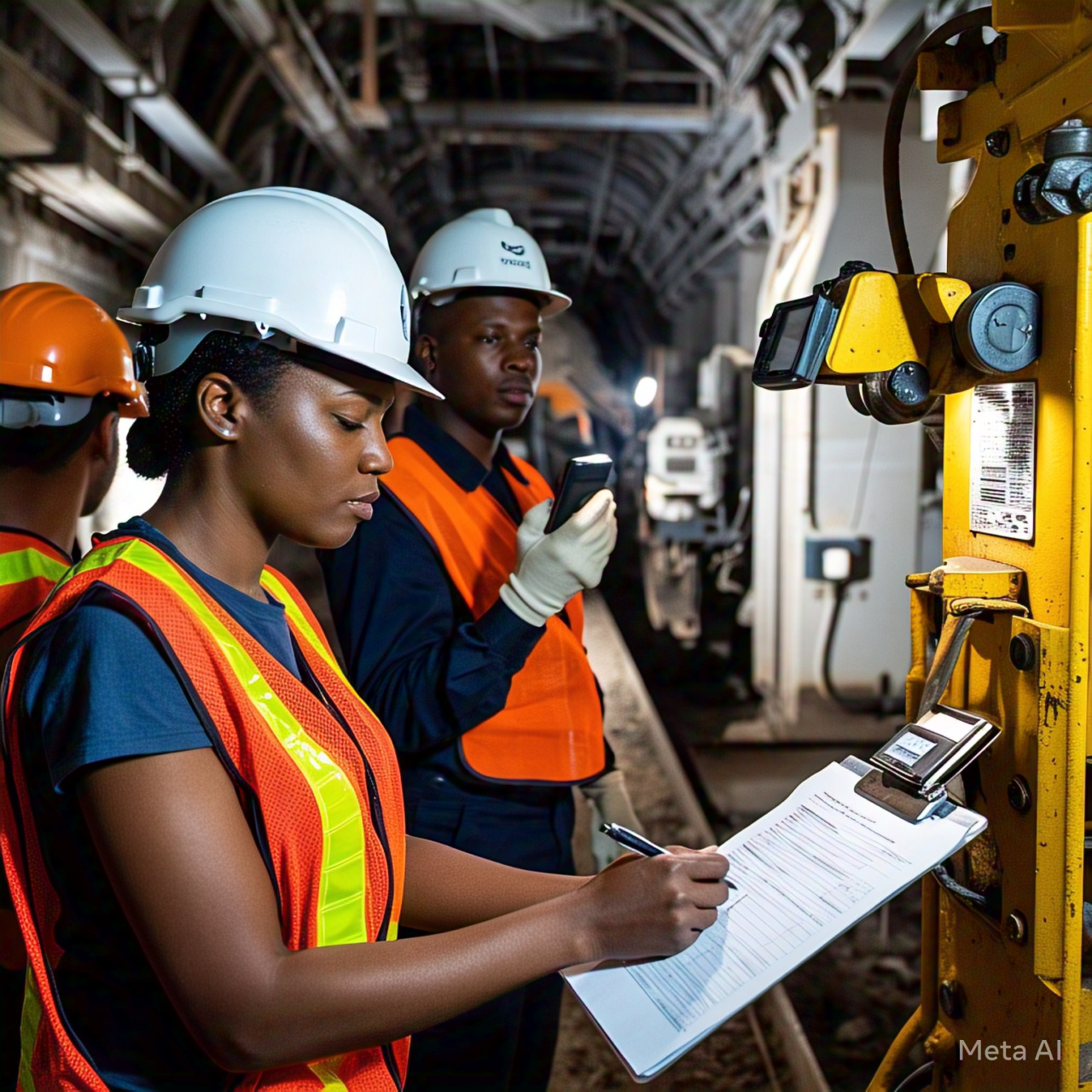
Black workers using checklists or handheld devices during a safety audit
3. Embracing Digital and Automation with Strong Leadership
Technology
is rapidly transforming the mining industry. From autonomous haul trucks and
AI-powered exploration to real-time data analytics and remote-controlled
operations, digital transformation is no longer a future concept — it’s
happening right now. However, the success of these innovations doesn’t rest
solely on the technology itself — it rests on leadership.
Strong
leadership is essential in guiding mining organizations through the
complexities of digital and automation adoption. It's not just about
introducing new tools — it’s about managing change, nurturing
adaptability, and building trust within teams as they transition
into a tech-augmented work environment.
Leading
the Tech Shift: More Than an IT Upgrade
When new
technologies are introduced, they often bring a mix of excitement and
apprehension among workers. Will jobs be lost? Will roles change? Will the
technology be safe, and will it really help?
Great
leaders address these concerns head-on. They communicate the “why” behind
the change, share the benefits for both the business and the workforce, and
actively involve employees in the transition process. This approach fosters
ownership, reduces resistance, and ensures smoother integration of digital
tools.
Key
Leadership Actions for Tech Integration:
a. Transparent Communication: Leaders must clearly explain
the purpose, impact, and expected outcomes of digital transformation
projects.
b. Upskilling and Reskilling: Providing training
opportunities empowers employees to stay relevant and thrive in a
tech-enabled environment.
c. Cross-Functional
Collaboration:
Tech adoption is most effective when operations, IT, and management work
together toward a common goal.
d. Supporting a Culture of Innovation: Leaders should encourage experimentation, welcome feedback, and view failure as a learning opportunity.
Humanizing
Automation
While
automation can streamline operations and improve safety, it’s crucial not to
overlook the human element. People remain the most valuable asset in mining,
and leaders play a critical role in ensuring that technology complements —
rather than replaces — human expertise.
Leadership
in this context means bridging the gap between machines and people,
ensuring that the workforce remains engaged, valued, and equipped for the
future.
Real-World
Example:
Some forward-thinking mining companies have established digital command centers, where supervisors and technicians monitor real-time data from across multiple operations. In these environments, leaders facilitate collaboration between data scientists, engineers, and field workers, creating a synergy between on-ground experience and digital intelligence.
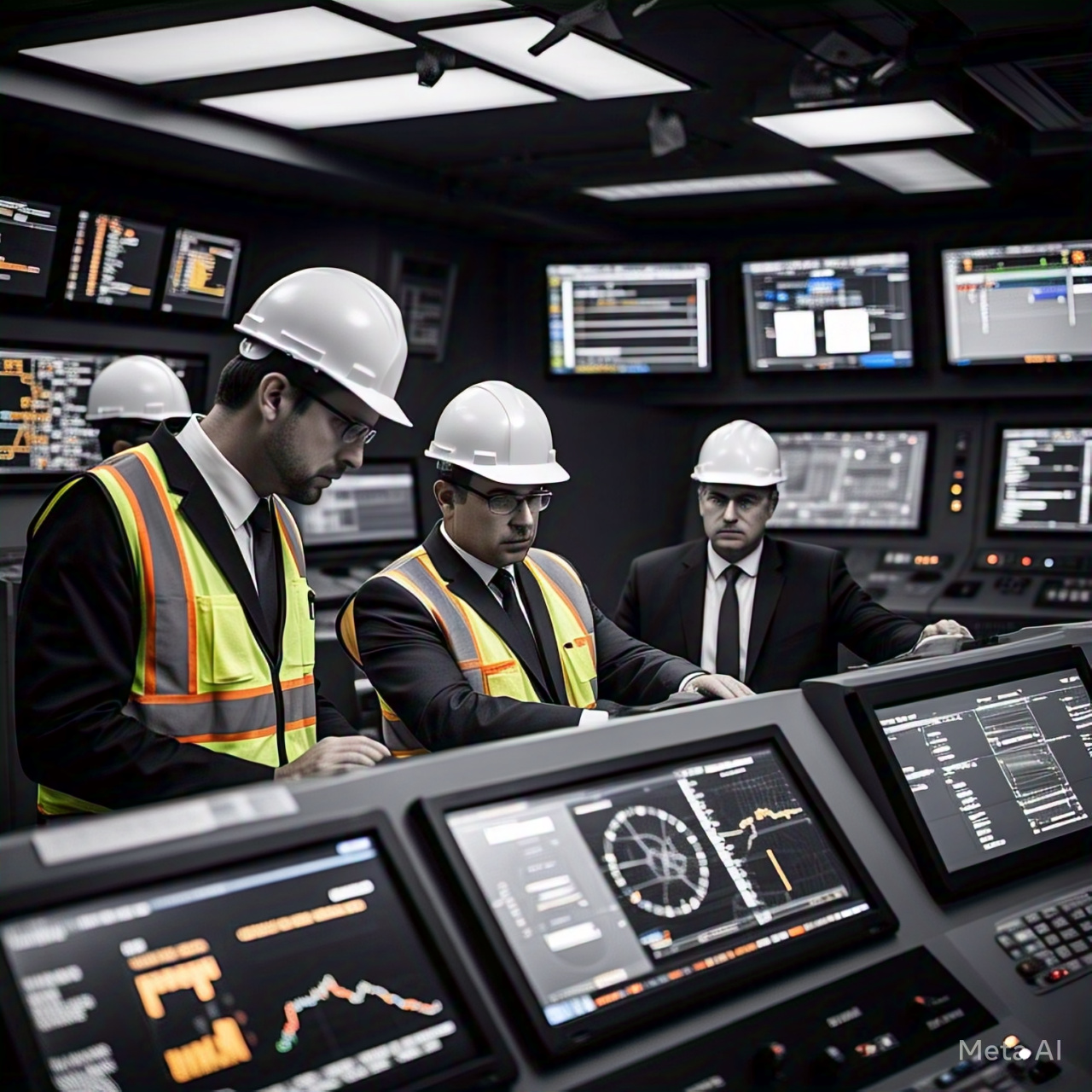
Engineers and supervisors analyzing mine data on digital dashboards in a control room
4. Developing the Next Generation of Mining Leaders
As the
mining industry grapples with rapid change — from digital transformation and
environmental regulations to generational shifts in the workforce — developing
the next generation of leaders has never been more critical. Today’s junior
engineers, field supervisors, and analysts are tomorrow’s strategic
decision-makers. But becoming an effective mining leader takes more than
experience in the field; it requires intentional development, mentorship,
and a culture that nurtures leadership potential.
Bridging
the Talent Gap
The
industry is facing a growing talent gap due to retirements, competition from
tech sectors, and the perception among younger generations that mining is
outdated or environmentally unfriendly. To attract and retain top talent,
mining companies must rebrand the industry as innovative, sustainable,
and full of opportunity — and that starts with visible, inspiring leadership.
Key
Strategies for Leadership Development:
a. Mentorship and Coaching: Pairing experienced leaders
with emerging professionals fosters the transfer of knowledge, company
values, and real-world problem-solving skills. These relationships can
guide young professionals through complex challenges and help build
confidence and decision-making abilities.
b. Leadership Training Programs: Structured programs — whether
internal academies or external certifications — are essential to build
competencies in communication, conflict resolution, project management,
and strategic thinking. These programs should be tailored to the unique
realities of mining environments.
c. Rotational Assignments and
Cross-Functional Exposure:
Giving future leaders hands-on experience across different departments —
from environmental management and safety to operations and finance — helps
develop well-rounded managers who understand the full scope of mining
operations.
d. Succession Planning: Forward-thinking mining companies identify high-potential employees early and prepare them to fill key leadership roles when vacancies arise. Succession planning ensures business continuity and reduces disruptions in leadership transitions.
Embracing
Leadership Diversity
Equally
important is the need to diversify the leadership pipeline. Mining companies
are making strides in empowering women, Indigenous professionals, and
underrepresented groups to rise into leadership positions. This is not just
about fairness — it’s about enriching decision-making, improving community
relations, and driving innovation through diverse perspectives.
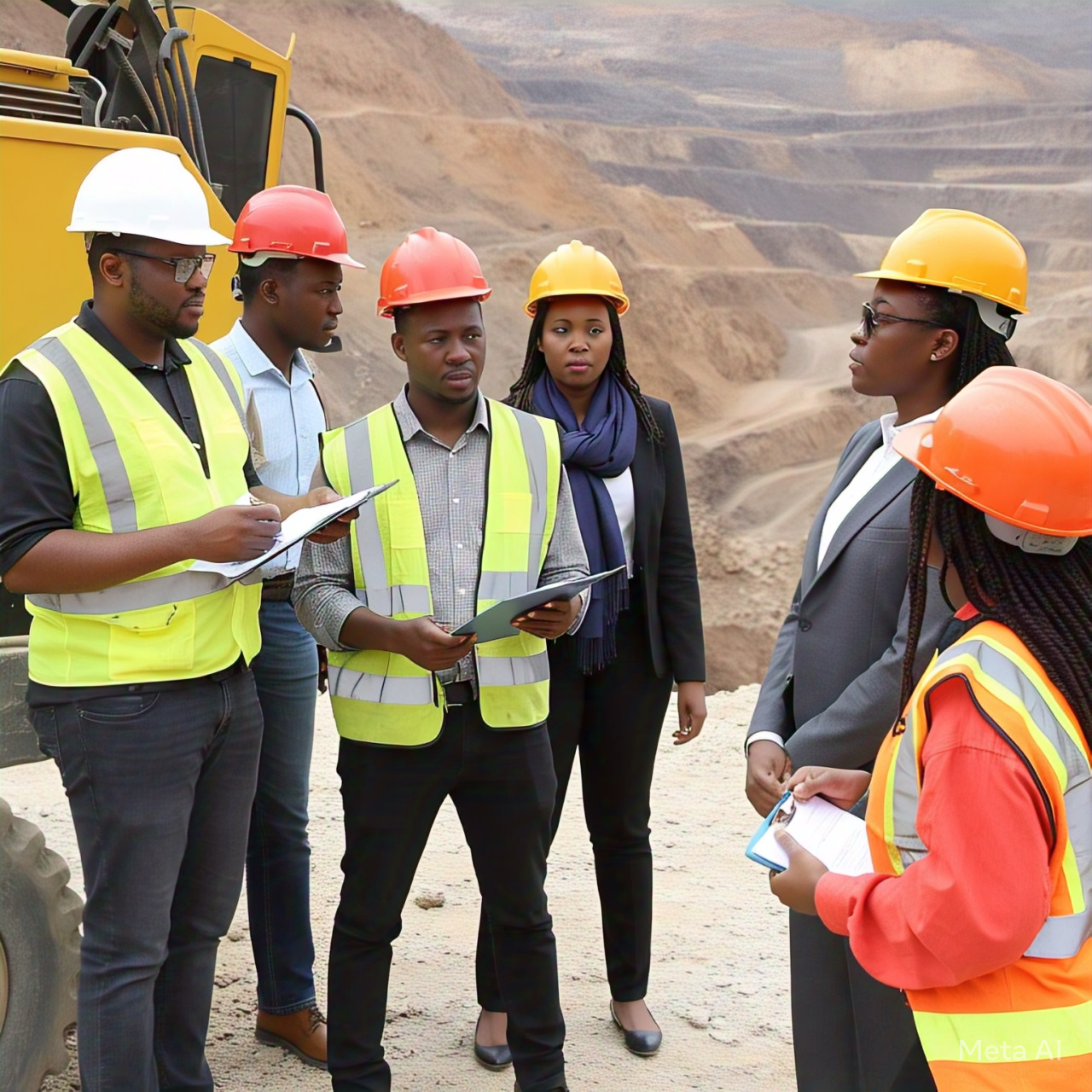
A group of early-career mining professionals participating in a leadership workshop or cross-functional field tour
5. Diversity, Inclusion, and Modern Mining Management
The mining
industry, once characterized by a relatively homogenous workforce and
leadership structure, is undergoing a cultural transformation. Today, mining
companies around the world are realizing that diversity and inclusion
(D&I) are not just moral imperatives — they are strategic advantages.
Modern
mining management recognizes that building inclusive teams fosters innovation,
resilience, and better decision-making. Diverse teams bring broader
perspectives, challenge groupthink, and contribute to healthier, more
collaborative workplaces — all of which lead to stronger business outcomes.
Why
Diversity Matters in Mining
a. Better Problem Solving: Diverse teams approach
challenges from multiple angles, leading to more creative and effective
solutions — a valuable asset in a high-risk, high-stakes industry.
b. Stronger Talent Pipelines: By expanding recruitment to
underrepresented groups, companies tap into a wider pool of skills and
perspectives.
c. Improved Community Relations: Inclusive companies often
build stronger relationships with local and Indigenous communities, which
is essential for gaining and maintaining a social license to operate.
d. Increased Profitability: Studies across industries have shown that companies with more diverse leadership outperform their less inclusive counterparts in terms of profitability and innovation.
Key
Areas of Focus in Mining D&I:
- Gender Equality:
- More women are entering the
mining workforce, from field engineers to executives. However, gender
parity remains a work in progress.
- Programs such as mentorship
for women in mining, leadership pathways, and family-friendly policies
are helping to close the gap.
- Indigenous and Local
Inclusion:
- Indigenous communities often
live near mining sites and are directly affected by operations.
Empowering Indigenous voices in decision-making and offering employment
and training opportunities can build mutual trust and long-term
partnerships.
- Cultural and Ethnic Diversity:
- Mining is a global industry, often requiring cross-border collaboration. A culturally diverse workforce promotes stronger communication and collaboration across regions.
The
Role of Leadership in D&I
Leadership
plays a pivotal role in driving diversity from the top down. It's not just
about policies — it's about living the values of inclusion every day.
Inclusive leaders:
a. Speak up against bias
b. Actively seek input from
diverse voices
c. Create safe spaces for open
dialogue
d. Hold themselves and their teams accountable for equitable practices
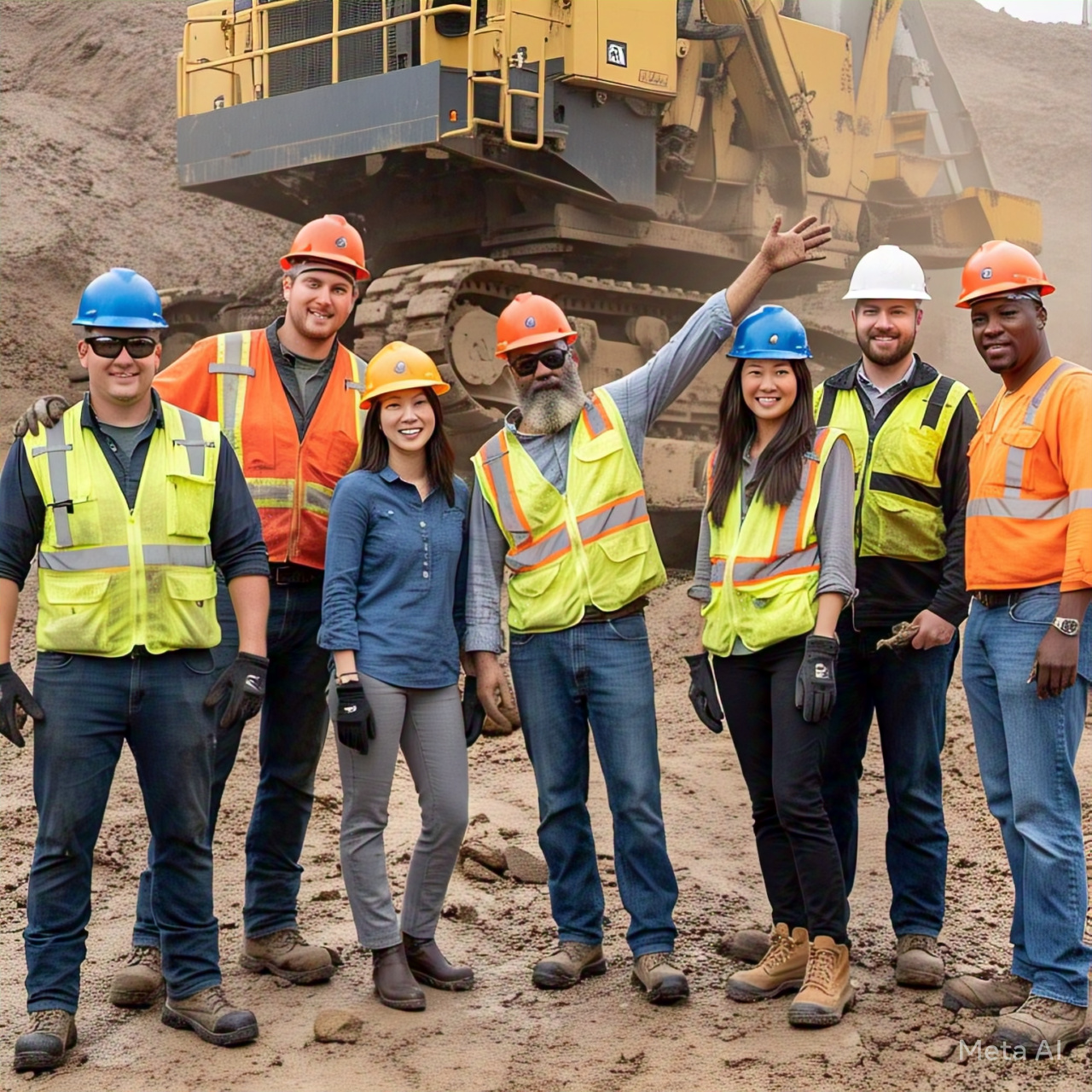
A group photo of a mixed-gender, multicultural team on-site


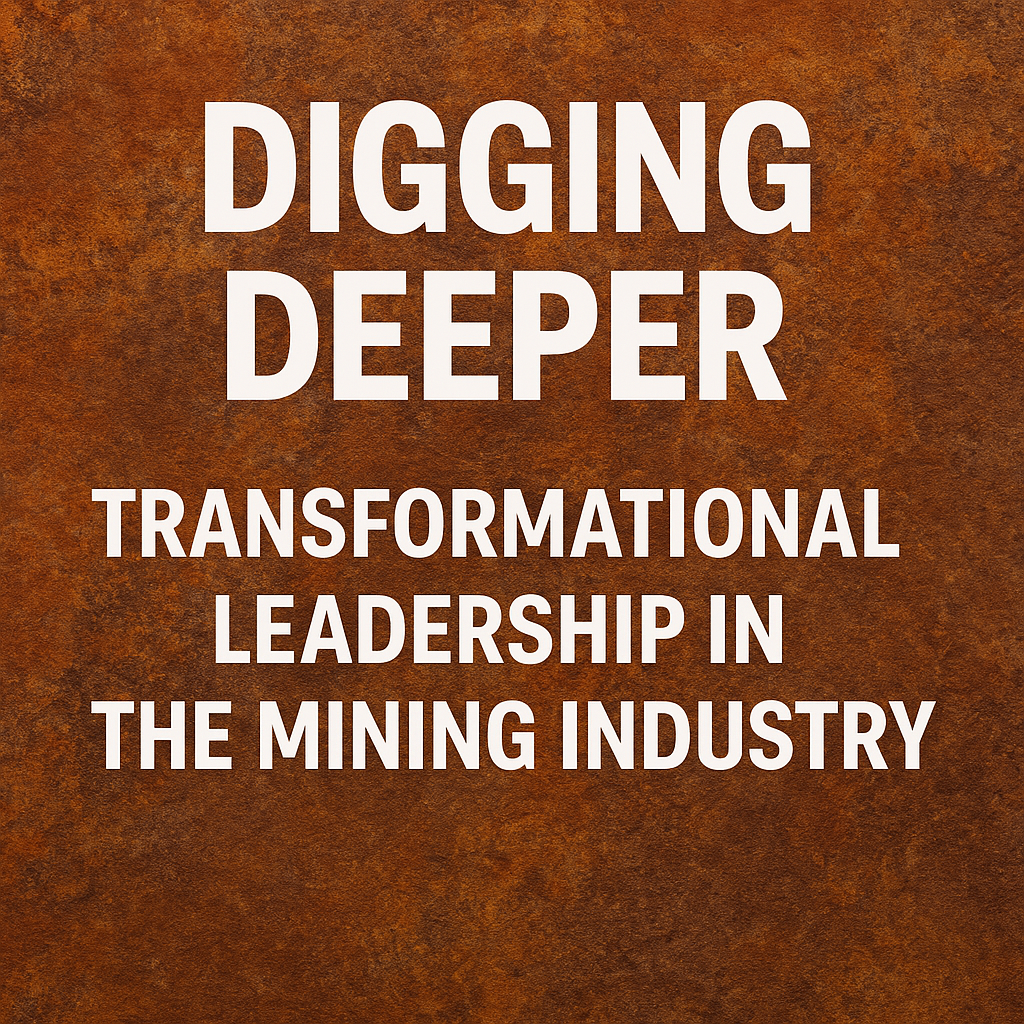
 Emmanuel Essel Afful
Emmanuel Essel Afful
